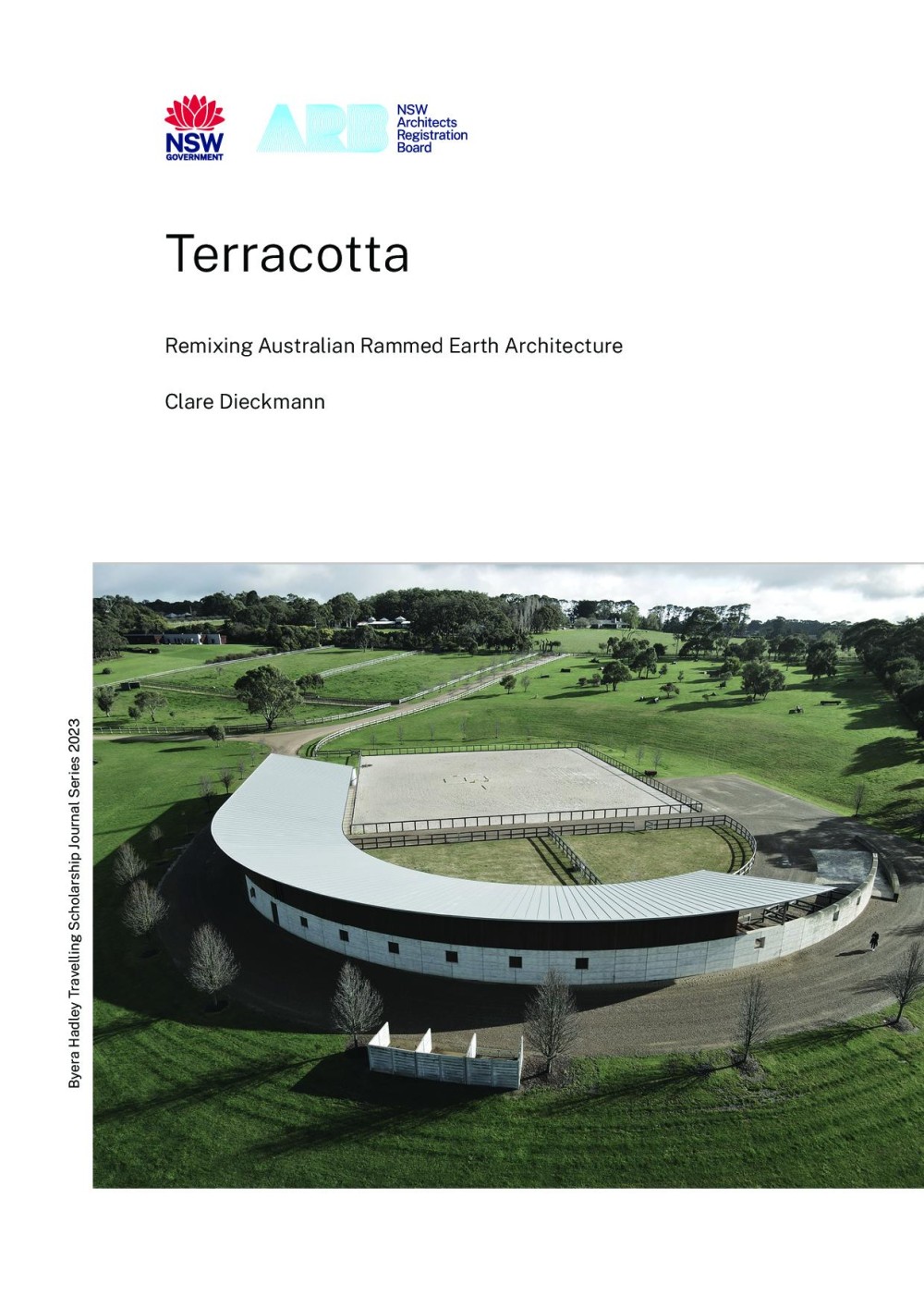Byera Hadley research reports

Clare Dieckmann / 2024
Terracotta
Sustainability, Ecology & Environment
Australia
Contemporary rammed earth buildings present an alternative material choice for Australian architects. Earth can be recycled endlessly, making unaltered mixtures of earth the most sustainable option. The sustainable potential of earth is raising awareness towards where our broader construction industry chooses to extract materials from and our impact on the natural environment. Rammed earth buildings are often located within rural and regional settings set amongst beautiful landscapes of wine-growing vineyards in nutrient-rich soils. Australian rammed earth walls are coloured by the unique mineral composition of soil stamped beneath our feet.
The mild-temperate climates covering the Australian continent prompts Australian architects to design buildings from rammed earth made from red-brown coloured soils on subsoils rich in clay. The temperate-oceanic climates of southern Europe inspires European architects to utilise the thermal properties of earth, making earthen buildings with earth comprised of clay and loam. Rammed earth buildings in Australia and Europe are examples of architects responding to their local climate using natural resources readily found in the ground around them. This study of local soils and their history will reveal new ways of responding to our climate while protecting our natural resources.

